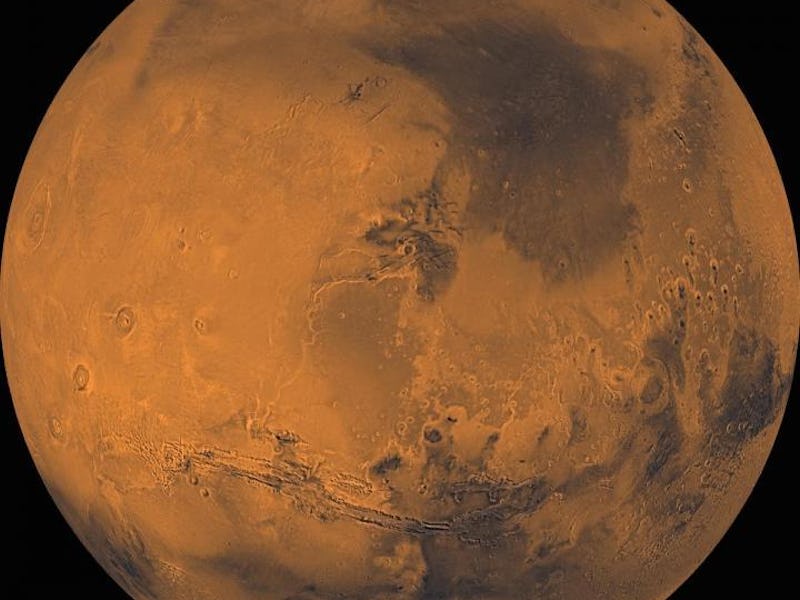Ancient Mars Was Maybe More Habitable Than Ever Imagined
The clues lie within the properties of a hydrogen-containing mineral called whitlockite.

In a twist on a commonly held theory, a key mineral found in Martian meteorites — long considered evidence that the early history of the red planet was a dry one — might actually indicate that ancient Mars had more water than we believed. Surface craters may have once featured a hydrogen-enriched mineral called whitlockite, a substance that, in addition to being water-soluble, contains phosphorus, one of the vital building blocks for life as we know it, according to new results published Monday in the journal Nature Communications.
Researchers working at the Department of Energy’s lab in Berkeley, California, conducted simulations on synthetic whitlockite that showed the substance is capable of a key chemical transformation. When subjected to shock-compression, whitlockite dehydrates and subsequently produces merrillite, a mineral common to Martian meteors. So how much water must there have been on Yung Mars for all its merrillite to have once been whitlockite? And where did that water come from?
“If even a part of merrillite had been whitlockite before, it changes the water budget of Mars dramatically,” said co-author Oliver Tschauner, a professor of research in the Department of Geoscience at the University of Nevada, Las Vegas, in a press release. “The overarching question here is about water on Mars and its early history on Mars: Had there ever been an environment that enabled a generation of life on Mars?”
Whitlockite in its natural crystalline form.
Merrillite occurs naturally on Martian meteorites, but it doesn’t do so on Earth. The purpose of the shock experiments was to simulate conditions under which meteorites were ejected from Mars. Using a technique known as x-ray diffraction that illustrates what in sample is whitlockite and what is merrillite, the team eventually discovered that as much as 36 percent of their synthetic whitlockite became merrillite during the course of their experiments.
“The only missing link now is to prove that (merrillite) had, in fact, really been Martian whitlockite before,” Tschauner said in the press release. “We have to go back to the real meteorites and see if there had been traces of water.”
The Mojave Crater - we think some meteorites found on Earth originated here.
We know there was liquid water on early Mars — and there is evidence liquid water sits on the surface of Mars today — though we still don’t know if it got there via meteor or comets or what have you. Tschauner and his colleagues are planning additional experiments on actual, non-simulated Martian rocks (we have some of these on Earth via meteorite leftovers) to see how the results bear up. Of course, the best way to test this new theory would be for NASA’s Curiosity rover to serve up some fresh samples. Fingers crossed.